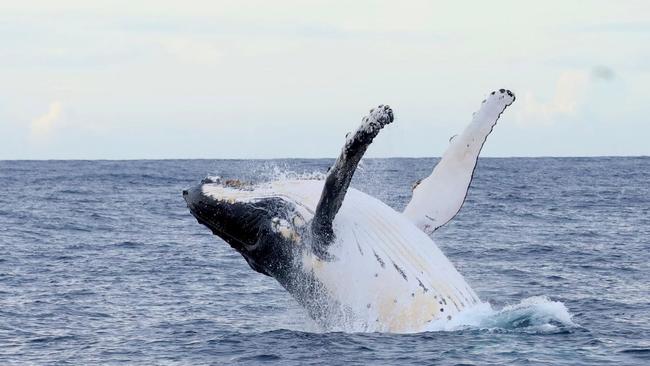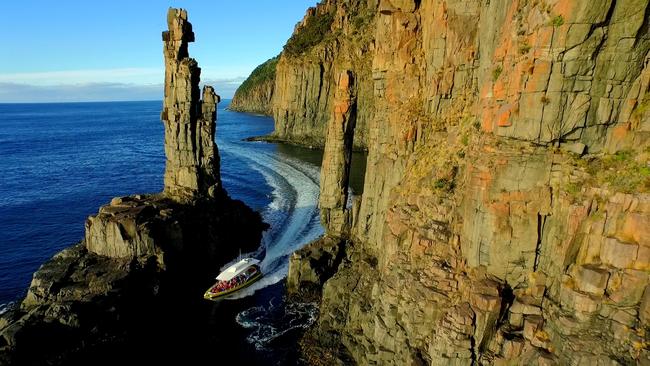Humpback and southern right whales spotted on Tasmanian south coast
Humpback and southern right whales have been spotted by excited tourists along Tassie’s south coast. PICTURES >>

News
Don't miss out on the headlines from News. Followed categories will be added to My News.
The number of whales migrating across the East coast of Tasmania is an incredible success story according to Rob Pennicott.
The owner of Pennicott Wilderness Journeys said he has seen the number of humpback and southern right boom over the past two decades.
“The whales we’re seeing at the moment are mainly humpbacks, but we’re getting quite a few killer whales as well at the moment,” he said.
“Both our Wineglass Bay and Tasman Island cruisers, it’s quite common to see from a couple right up to about 20 on a big day and it’s a fantastic success story.”
He said he used to hardly see any whales on their northern migration off the South East coast of the state.
“This year has been an incredible number,” he said.
“It’s a great success story for conservation, and sustainability and it’s such a marvellous thing for our guests to be able to see in such a beautiful environment like Tasmania.”
Over the past week humpback and southern right whales have been spotted playing in the water near Wineglass Bay and Eaglehawk Neck.
Marine Conservation Program wildlife biologist Dr Kris Carlyon said it’s normal to spot whales in Southern areas this time of year.
“We’re currently seeing the first of the humpback and southern right whales, which are the two large whale species that migrate past our coast,” he said.
“We’re starting to see the first of those animals move northward, past Tasmania’s east coast so there were sightings earlier this week of southern right whales off Eaglehawk Neck.”

Throughout the summer, the whales have been feeding in the Southern Ocean, potentially including as far down as Antarctica.
“They’re now making their way north to breed, so to give birth and to socialise and to mate with other animals,” Dr Carlyon said.
“Humpbacks will travel further than the southern right whales, so they’re on their way north to their breeding grounds in northern New South Wales and Queensland.
“Southern right whales tend to stick a little further south, so a proportion of southern right whales will remain in Tasmania while others will continue on to the Victorian and South Australian coastlines, and even southern New South Wales.”
Many of the whales sighted along the coast were breaching the water and were slapping their tails and pectoral fins.
“When the adults breach, it’s often around communication so when they breach and they land, there’s often a significant noise associated with that and that noise can travel through the water and be heard by other animals at significant distances,” Dr Carlyon said.
“It’s a little early for this, but the younger whales are just burning off energy and they’re playing essentially.”
Dr Carlyon said Tasmanians are really lucky to annually see the mammals migrating through coastal waters.
“Even though whales are incredibly large, these animals are still really vulnerable to disturbance and people should adhere to the national guidelines around appropriate whale and dolphin viewing,” he said.
“They’re also incredibly big animals and potentially dangerous if too close so appropriate viewing is really key to maintain animal welfare, but also maintaining human safety.”

Anyone who spots a whale, dolphin or seal in Tasmanian waters can report it to the Whale Hotline on 0427 942 537.
“We log these sightings, and it enables us to look at what are the important areas that these whales are using to detect any changes in behaviour and presence and timing of migration through time,” Dr Carlyon said.
“That’s really important at the moment as some of our waters and our oceans and our climate is changing, to be able to see whether that’s having an impact on our marine species.”




